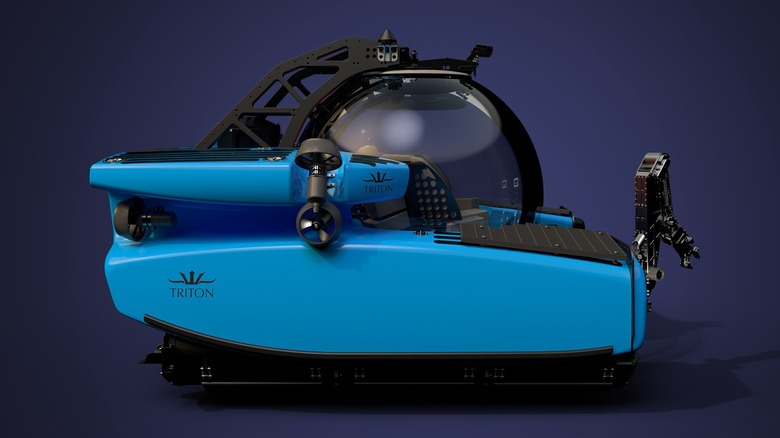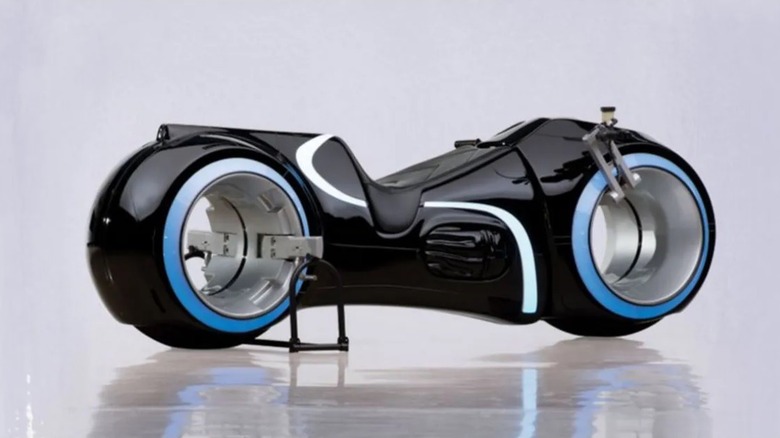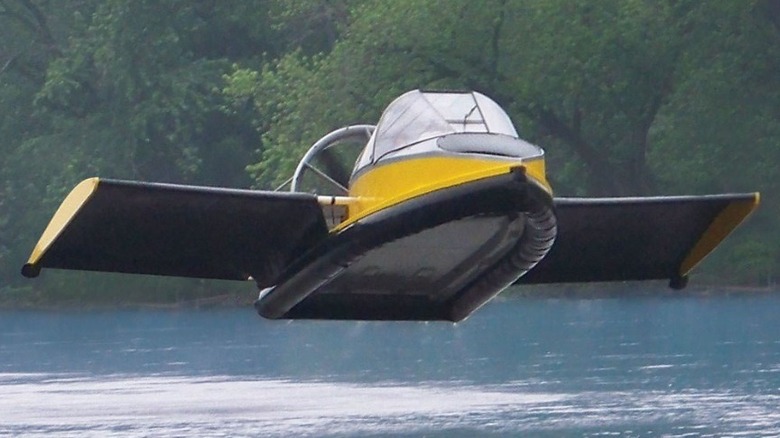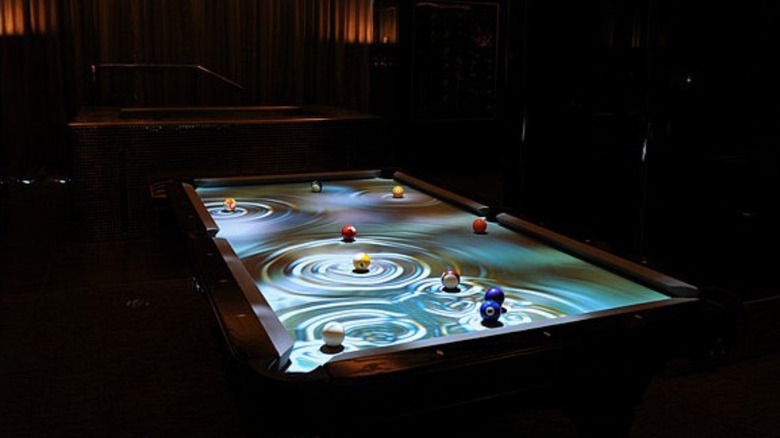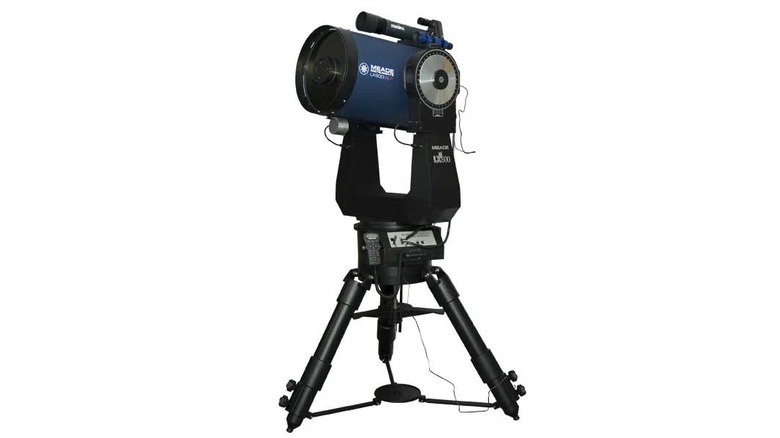Luxury Gadgets That Are Probably Worth More Than Your Car
We may receive a commission on purchases made from links.
It seems like technology is getting more expensive all the time. Purchasing a new gaming system is a considerable investment, and that's before you account for controllers and games to round it out. Buying a new phone puts such a dent in your bank account that most major wireless providers offer financing as a standard option, breaking up the payments over the course of two or three years.
Most of us only manage to get a cool new gadget once or twice a year, if that, usually for special occasions. Then we have to hope they'll last long enough to get us to the next time we can afford to splurge for something extravagant.
That's the relationship most of us have with ordinary, everyday technology, a careful balance between treating ourselves and breaking the bank. There is, however, an entirely different class of gadgets. These are the high-flying pieces of tech you only read about. These are the things your coworker swears their uncle's, cousin's best friend has, but you know they're lying. Getting your hands on any one of these devices might require you to break into the kid's college fund, take a loan, or win the lottery.
We don't know exactly who the market for these gadgets is, but we're glad they exist, if only so we can gawk at them in equal parts awe and disbelief like a diamond-encrusted train wreck.
La Marzocco Linea Mini coffee maker
If you take your coffee drinking seriously but don't like going to a café or a chain coffee shop, there might be nothing better than this at-home machine. It has been designed with all of the features beloved by professional baristas in a package that will easily fit on your kitchen counter. It comes in six colors ranging from muted black or gray to a more whimsical red, yellow, or soft blue.
The Linea Mini's dual boilers, hot water spout, internal pump, and steam wand promise café-quality beverages to start your morning off right. Even better, a connected app means you can start your espresso from the comfort of your bed so it will be waiting for you by the time you get your slippers on.
The sleek design marries modern engineering with a classic aesthetic which will make you feel like you're sipping your favorite hot beverage in an aging diner with old friends. It looks like it makes the best cup of coffee in the world, and we hope that it does because you're going to need all the help you can get if you plan to pay off its $5,900 price tag.
This coffee maker is far from the most expensive gadget on this list, but it'll still cost you more than a used car on a good day. Suddenly, $8.00 for a latte at the local coffee shop doesn't seem so bad.
Valet 3 wireless charger
We might be nearing a time when cabled phone chargers will no longer exist. Most modern phones are capable of charging wirelessly on a compatible charging plate. Additionally, smaller peripheral devices like wireless earbuds and smartwatches have gotten in on the wireless charging game. Consequently, having a reliable charging plate is one of the easiest ways to add a little convenience to your life, but which one should you choose?
Sure, you could use an affordable wireless charger like all the other normies. You can get any number of them for as little as $20.00. Alternatively, you could spend a quarter of a million dollars on the Valet 3 and be sure your phone remains charged in style.
The heavy price tag comes from the materials encasing its electronic guts. The housing is made of 18-karat gold and that's just for starters. On its surface, you'll find vicuña wool, the most expensive fabric in the world, (via Money Inc). The vicuña is a protected animal from Peru and a relative to llamas and alpacas. Their wool is prized for its texture and warmth and only harvested from free-roaming animals who are then released safely back into the wild, (via Master Class).
It won't charge your devices any better than a more common charger will, electricity doesn't flow more freely in the presence of opulence. Sometimes spending money is the point, I guess. It pairs well with any of these ridiculously priced phones.
LG Direct View LED Extreme Home Cinema Display
The only thing larger than the name of this device is the device itself. If televisions ever get larger than this, they'll run the risk of collapsing in on themselves, forming a finite point of condensed matter. Before that happens, however, you'll never have to go to the movie theater again because you'll be living inside of one.
The Direct View LED Extreme Home Cinema Display, from LG, offers a viewing experience that rivals your local cineplex, but it'll cost you a pretty penny to get it. Instead of an image created by LCDs and backlit with LEDs, this screen's picture is created directly by the LEDs, hence the name. As a result, it promises improved contrast and brightness not seen in your run-of-the-mill TV, (via Luxurious Magazine).
This slate of displays — we hesitate to even call these monstrosities TVs — come in at 81 inches on the small end and extend to an outrageous 325 inches at the high end. For the privilege, you can expect to spend anywhere between $70,000 and $1.7 million, depending on the size and resolution you choose.
LG suggests they should run comfortably for 100,000 hours of viewing and come with years of additional support with an estimated value of $30,000. For the price tag, robust customer support is the least they can do. Suddenly, ten bucks for a bucket of popcorn doesn't sound so bad.
Triton personal submarine
The wealthy and the connected have made headlines recently by taking commercial flights into space aboard a Blue Origin flight but there's another uncharted domain closer to home, that of the world's oceans.
Exploring the ocean can be as simple as getting some snorkel gear or a SCUBA certification, and that's good enough for most of us. However, if you want to explore in luxurious comfort without worrying about shark attacks, or you want to delve deeper than a tank of pressurized oxygen will allow, then look no further than a personal submarine from Triton.
Triton offers several models with different specifications depending on how many people you want to take with you, how deep you want to explore, and how much travel time you want to have.
One of their more affordable options, the Triton 3300/3, can carry a crew of 3 to depths of up to 1,000 meters and keep you down there for up to twelve hours. They don't list prices on their website, you'll have to make an inquiry for that, but according to Plexiglass one of these subs will run you in the neighborhood of $3.5 million.
That's certainly a hefty price tag, but if you're like James Cameron — who became only the third person to venture to Challenger Deep in his Triton sub, (via Triton Submarines) — you might be able to turn your investment into a lucrative film career.
A real Tron light cycle
When "Tron" hit theaters in 1982 it introduced the world to the concept of the Grid, a digital world inside of a video game inhabited by sentient programs. The film was a feast for the eyes, offering up digital delights including the now-famous light cycle.
Nearly 30 years later, in 2010, the franchise was revisited in "Tron: Legacy," returning viewers to the Grid, this time with impressively updated graphics, not to mention a brain-melting soundtrack by Daft Punk.
The light cycle got an upgrade, along with everything else, and that inspired the creation of a real-life replica motorcycle ripped straight from the silver screen. Appropriately, the replica light cycle boasted an electric motor instead of the typical combustion engine. According to Thrillist, it was commissioned for Hammacher Schlemmer, a high-end transportation company, and went to auction in through RM Auctions, a part of Sotheby's.
While it was expected to sell for about $40,000, the top bid came in at nearly double that, selling for a ludicrous $77,000, (via CNET). All things considered, that's not too bad for a bike that can get you to and from work while also avoiding the nefarious clutches of Clu.
Personal hovercraft
The flying car of your dreams is finally here. Sort of. You won't be taking to the skies and parking in a garage at the top of a skyscraper, but you will soar over obstacles as tall as 20 inches in The Flying Hovercraft from Hammacher Schlemmer.
While more common hovercraft use blowers to create a high-pressure cushion of air beneath the craft, (via Scientific American), The Flying Hovercraft uses a 130 horsepower twin-cylinder engine to power a thrust propeller at the back. That doesn't achieve a hovering effect in and of itself — it is essentially a fan boat in this regard — that's accomplished by a pair of integrated wings on the craft's sides.
Two 9-gallon gas tanks give you 160 miles of range before sputtering to a stop and drifting back to the Earth. In the meantime, you'll glide seamlessly at up to 70 miles per hour, carrying payloads of up to 600 pounds, including passengers. Strangely enough, you'll have to register your hovercraft as a boat, despite the fact that it hovers easily over sand, snow, or swamp.
If you've ever wanted to try your hand at flying in the low-stakes arena of the airspace roughly two feet off the ground, The Flying Hovercraft can make that happen. All it will cost you is $190,000.
Amphibious car
According to Insider, Lyndon Johnson was known for playing a cruel yet hilarious prank on unsuspecting visitors to his ranch. He'd take them on a tour of the property in his Lagoon Blue convertible before driving it directly into a lake while screaming that the brakes had gone out. After some initial panic, passengers soon learned they were in an amphibious car. Less than 4,000 Amphicars were manufactured during the 1960s, but you have the opportunity to recreate Johnson's prank in your own Panther amphibious car. The pleasure of your friends' terrified screams and nervous laughter will cost you between $158,000 and $198,000 depending on the features you choose.
Before that, you're going to have to jump through the registration hoops which may be a hassle depending on where you live. In many cases, you'll have to register it as both a car and a boat, and that's if you can even register at all in your state. The manufacturer recommends checking with local authorities before you purchase.
Transitioning from road to water is a seamless process involving pulling a knob to turn on the propulsion jet and pressing a button to raise the wheels. Getting back on land simply requires reversing that process. There's even a fire rescue version that transitions to the water more quickly and is capable of pumping more than a thousand gallons a minute through a mounted fire hose.
Robotic mech warrior
None of us wants an alien invasion or an interplanetary war. Yet, at the same time, riding around in gigantic robotic mech suits would be pretty cool. Luckily for all of us, Suidobashi Heavy Industries has jumped the figurative gun and built the mech warrior of our dreams in advance of any supernatural invading force.
Their Kuratas mobile robotic suit stands 13 feet tall and weighs roughly 4.4 tons, (via Engadget). The user interface uses Kinect to allow for motion control and, let's be honest, we're not sure we'd even want a mech suit without that.
There are only a couple of problems if you're hoping to own the giant mech suit of your dreams, aside from where you're going to store it. First, shipping is a nightmare and if you want one, you really have to live in Japan's Kyoto region, or at least be willing to travel there. Second, this thing comes with some assembly required. In fact, it's a starter kit and you'll have to build the whole thing yourself. Finally, its $1.35 million price tag doesn't even include arms, (via Engadget). Those are extra, and that's if you can even get your hands on one. They are incredibly limited, but that's probably a blessing. As cool as riding one around would be, too many of them clogging up the highway would be a pain. The robot wars are going to have to wait.
Interactive pool table
As a game, billiards has been around in some form for nearly 700 years. As explained by History, it got its start in France as an outdoor game similar to croquet before moving to a wooden table indoors. Green felt was placed atop the table to simulate the grass of its earlier version and it evolved from there into the game we know today. Just because pool is an old game, doesn't mean you can't play it like you're living in the future.
The interactive Obscura CueLight pool table from Obscura Digital has built-in visuals which can turn any pool table into a living work of art. The system will cost you roughly $12,500 and doesn't actually come with a pool table, (via Luxury Launches). If you've got a table already, it should be compatible, or you can bundle one when you purchase the system.
The system uses overhead projectors and sensors to read the activity on the table and display interactive visuals. Players can choose between rippling water, trails of fire, and a mode that reveals artwork under a pool of black ink, (via Geek Alerts) each of which respond in real-time to the movements of the balls on the table's surface. The game has come a long way from its humble beginnings in some French aristocrat's garden.
Meade 16-inch LX600 ACF F/8 telescope with Starlock
Looking into the night sky is one of the most humbling things you can do with your time. It's only a little more humbling than the price tag on the Meade 16-inch LX600 ACF F/8 telescope with Starlock. Coming in at just under $20,000, it offers a wide aperture and fully automated control, which makes finding your target in the night sky easier than ever.
There are certainly more expensive telescopes in existence, but they're usually under the control of universities, observatories, or world governments. The Hubble Space Telescope, for instance, has racked up a bill of about $16 billion over the course of its mission, (via NASA) and the JWST is giving it a run for its money, having already cost about $10 billion, (via NPR).
By those measures, the cost of this consumer scope is a small price to pay for your own window into the universe. It is built with deep sky astrophotography in mind, using its Starlock technology and GoTo system to easily find more than 140,000night sky objects and keep them in the center of your field of view. It's the sort of personal telescope Galileo could only have dreamed of.




